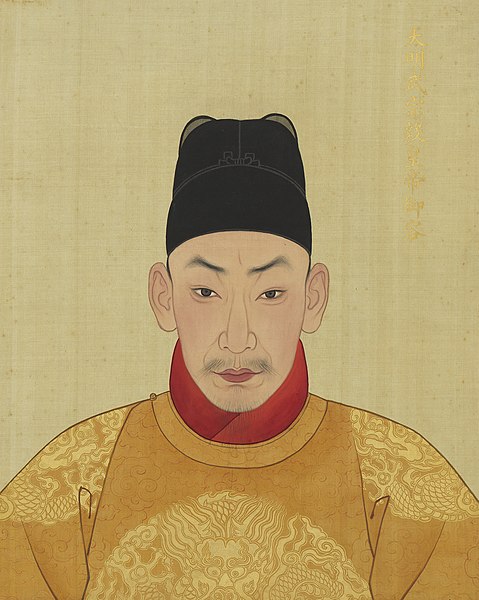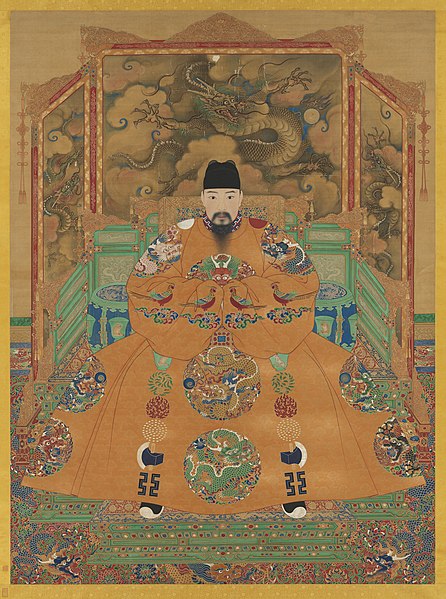The Zhengde Emperor, personal name Zhu Houzhao (朱厚㷖), was the 11th emperor of the Ming dynasty, reigned from 1505 to 1521. He was the Hongzhi Emperor's eldest son. Zhu Houzhao took the throne at only 14 with the era name "Zhengde", meaning "right virtue" or "rectification of virtue".
Palace portrait on a hanging scroll, kept in the National Palace Museum, Taipei, Taiwan
Portrait of the Zhengde Emperor
Stele in memory of the renovation of the Temple of Yan in Qufu, 1509 (4th year of the Zhengde era)
Chinese Islamic bronze incense burner made during the reign of Zhengde. Adilnor Collection, Sweden.
The Hongzhi Emperor, also known by his temple name as the Emperor Xiaozong of Ming (明孝宗), personal name Zhu Youcheng (朱祐樘), was the tenth emperor of the Ming dynasty, reigned from 1487 to 1505. He succeeded his father, the Chenghua Emperor. The Hongzhi Emperor was a wise and peaceful ruler. "Hongzhi", the era name of his reign, means "great governance".
Palace portrait on a hanging scroll, kept in the National Palace Museum, Taipei, Taiwan
A stele with the Hongzhi Emperor's inscription regarding the repair of the Temple of Confucius, Qufu. 1504 (17th year of the Hongzhi era)
Detail of the painting Poet on a Mountaintop by Shen Zhou (1427–1509), ink on paper. The Nelson-Atkins Museum of Art, Kansas City, Missouri
The Tailing (泰陵) mausoleum where the Hongzhi emperor was buried.








